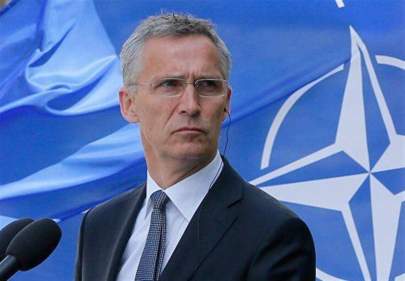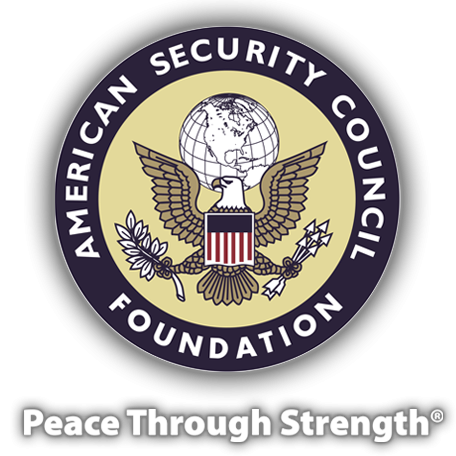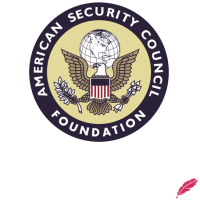NATO Fortifies Eastern Flank
By Alan W. Dowd - ASCF Senior Fellow

June 2022—Because of Russia’s unconscionable invasion of Ukraine, the NATO alliance is more united than at any time since the fall of the World Trade Towers on 9/11—and more relevant and more important than at any time since the fall of the Berlin Wall on 11/9. From the Baltics to Bulgaria, NATO is rapidly strengthening its defenses and deterrent capabilities to confront the new/old threat along its eastern flank.
Battle Ready
NATO is standing up four new multinational battlegroups in Bulgaria, Hungary, Romania and Slovakia. Three of these NATO members border Ukraine (which Putin is trying to conquer) and two border the Black Sea (which Putin is trying to turn into a Russian lake). These new battlegroups are in addition to existing NATO battlegroups in Estonia, Latvia, Lithuania and Poland (which were created after Russia’s annexation of Crimea). The new battlegroups represent a key element in NATO’s efforts to “significantly strengthen our longer-term deterrence and defense posture” and “further develop the full range of…capabilities necessary to maintain credible deterrence,” as NATO’s leaders announced during their emergency summit in March.
As of this writing, NATO’s new forward deployments of ground-based units include:
-2,000 troops from the U.S., U.K., France, Denmark, Iceland in Estonia (along with host nation forces);
-1,700 troops from the U.S., Canada, Czechia, Albania, Iceland, Italy, Poland, Spain, Montenegro, Slovenia, Slovakia in Latvia (along with host nation forces);
-4,000 troops from the U.S., Germany, Czechia, Belgium, Iceland, Netherlands, Luxembourg in Lithuania (along with host nation forces);
-10,500 troops from the U.S., U.K., Romania, Croatia in Poland (along with host nation forces);
-2,100 troops from the U.S., Czechia, Germany, Poland, Luxembourg, Slovenia in Slovakia (along with host nation forces);
-800 troops from Croatia in Hungary (along with host nation forces);
-3,300 troops from the U.S., France, Italy, Belgium, Poland, Luxembourg in Romania (along with host nation forces); and
-900 troops from the U.S. in Bulgaria (along with host nation forces).
It's telling—and prudent—that U.S. troops are deployed on NATO’s most at-risk territory: Bulgaria, Romania, Poland, Estonia, Latvia and Lithuania. U.S. forces are in these countries for the very same reason U.S. forces were based in West Berlin throughout the Cold War and along the 38th Parallel since 1953: The presence of American troops sends an unmistakable message that crossing this line means you are going to war against the United States—no ambiguity, no question marks, no doubts about the consequences. The objective—during the Cold War and today, in Northeast Asia and Eastern Europe—is not to start a war but quite the opposite: to prevent what Churchill called “temptations to a trial of strength.” Within easy range of Putin’s troops and vassals, NATO’s frontline states understand that if Putin attacks their territory, he will force NATO to blink or fire back. Neither alternative would lead to a happy outcome. The former means NATO is dead. The latter means direct military confrontation between Moscow and NATO. The best way to prevent those nightmares is through deterrence—and there’s no better deterrent than U.S. troops and tanks.
Shields Up
This process of bolstering the defenses of NATO’s easternmost members actually began before Putin
launched his assault on Ukraine.
Late last year, as Putin massed more than 180,000 troops, hundreds of tanks and dozens of warships on Ukraine’s borders and coasts, the U.S. began deploying deterrent assets into Europe: thousands of ground forces to Poland and Germany; F-35s to Lithuania and Estonia; F-15s to Poland and Estonia; F-16s to Romania; AH-64 attack helicopters to the Baltics and Poland; Patriot air-defense batteries to Poland; hundreds of troops to Hungary, Bulgaria and Romania; 800 troops to the Baltics; and an aircraft carrier strike group to the northern Mediterranean. There are now 102,000 U.S. troops standing guard all across Europe (up from 100,000 in March, which was up from 80,000 in January). As the Wall Street Journal reports, the U.S. deterrent force includes 15,000 sailors aboard 28 warships and submarines in the Med and Baltic (up from six in the fall); 12 fighter squadrons and two combat aviation brigades; and two corps, two divisions and six brigade combat teams. This is the most U.S. troops deployed in Europe since 2005, but it’s far below Cold War deployment levels: The U.S. stationed 350,000 troops in Europe in 1987.
In addition, Britain deployed hundreds of troops to Poland; sent warships to the Black Sea and eastern Med; dispatched Challenger tanks to the Baltics; doubled its troop commitment in Estonia; and based fighter-bombers in Romania and Poland. Canada deployed hundreds of additional troops to augment its battlegroup in Latvia. Germany sent troops to reinforce its contingent in Lithuania. France deployed hundreds of troops to Romania and an aircraft carrier to the northern Med. Germany and the Netherlands sent Patriot batteries to Slovakia. Italy sent fighter-jets to Romania and an aircraft carrier to the northern Med. Denmark rushed F-16s to Lithuania and sent a frigate to the Baltic Sea. Dutch F-35s and Spanish Eurofighters deployed to Bulgaria. For the first time ever, NATO activated and deployed its rapid-response force.
NATO now has 130 warplanes on “high alert” in Central and Eastern Europe, more than 200 ships forward-deployed in the waters of the Arctic, North Atlantic, Baltic, Aegean, Adriatic and Mediterranean, and tens of thousands of newly deployed or repositioned combat troops in the region, according to NATO Secretary General Jens Stoltenberg. Looking ahead, Stoltenberg says NATO “will have substantially more forces in the eastern part of the alliance, at higher readiness, with more prepositioned equipment and supplies.” He adds that NATO leaders have agreed to “strengthen our integrated air and missile defense” and to deploy “carrier strike groups, submarines and significant numbers of combat ships on a persistent basis.”
Indeed, we can expect more bases and more permanent bases. Noting that “presence is always a good deterrent,” Joint Chiefs Chairman Gen. Mark Milley recently told Congress that he supports standing up new permanent bases in Eastern Europe. He reported that allies in Lithuania, Latvia, Estonia, Poland and Romania are “very, very willing” to build permanent bases for NATO troops.
Recommitment
As the most populous and most militarily-advanced member of the alliance, America is shouldering a healthy share of NATO’s new/old deterrence mission against the new/old threat posed by Moscow, but America is not alone. Recognizing that there’s no room for free-riders in the Free World, many allies are making substantial investments in the common defense.
In a stunning reversal, Germany announced that it will nearly double defense spending to 2 percent of GDP by 2023 (something Washington and NATO have been begging Berlin to do since 2006); unveiled a massive $112.7-billion rearmament fund; and decided to modernize its aging air force with F-35s.
In an even more stunning reversal, Finland and Sweden have applied for NATO membership—adding their formidable capabilities, technological prowess and strategic geography to the alliance.
Poland—thrust to the frontlines of Cold War II by Putin’s invasion—announced that its defense budget will jump to 3 percent of GDP next year. Some of that will be used to purchase 250 American M1A2 tanks—a long-delayed sale Washington approved just days before Putin’s invasion of Ukraine.
French President Emmanuel Macron recently announced that his government will increase defense spending, calling it “the price for peace, freedom and democracy.”
Italy will lift its defense budget to the NATO standard of 2 percent of GDP. Estonia and Lithuania are increasing defense spending. Latvia is increasing defense spending by 13 percent this year. The Dutch government is reworking its defense budget, with Prime Minister Mark Rutte declaring, “The Netherlands will spend a lot of extra money on defense.” Norway is making emergency investments to increase the number of naval deployments, bolster ammunition and fuel stocks, and enhance its ability to receive allied reinforcements. Romania is increasing defense spending by 23.7 percent for FY2023. And thanks to major investments in 2020, Britain is already riding its largest wave of defense spending since the Cold War’s end.
This recommitment to the common defense is not solely a function of self-preservation. Another key factor, as President Reagan explained in 1983, is the “shared principles and a common history” of NATO’s members. “The ties that bind us to our European allies are not the brittle ties of expediency or the weighty shackles of compulsion. They resemble what Abraham Lincoln called the ‘mystic chords of memory’ uniting peoples who share a common vision. ”Those shared principles, common vision and common history led America to defend Europe during World War I, to liberate Europe during World War II, to rebuild and protect Europe’s western half during the Cold War, to spread and support free government in Europe’s eastern half after the Cold War, and to preserve a united Europe—and the Free World—in these early hours of Cold War II.











